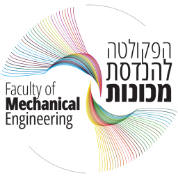Understanding how biological soft tissue materials respond mechanically is important for designing effective medical devices. This knowledge helps us model how the human body interacts with these devices and answer practical questions like “how comfortable is this orthopedic chair?”, or “will these prosthetic sockets cause injury after extended use?”. Although we have well-developed mathematical models for these tissues, practical analysis is limited due to the invasive nature of experiments required to relate these models to specific material parameters. Non-invasive material characterization methods, such as indentation, often result in multiple sets of seemingly optimal parameters, making reliable predictions difficult for other scenarios.
This study aims to explore how we can identify unique parameters for anisotropic hyperelastic materials using non-invasive methods. This is accomplished using inverse finite element analysis of indentation experiments on soft composite materials. By combining both force measurements and full-field deformation data of the indented region, a unique and accurate assessment of a two-parameter hyperelastic transversely isotropic model can be made. Overall, we improve the ability to characterize anisotropic hyperelastic materials using non-invasive methods.






